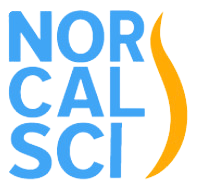SEARCH FOR SCI CURE: Clinical trials offer hope and disappointment
Dr. Mohamad Bydon examines the capabilities of the first subject in his clinical trials who successfully walked three years post injury.
So far in 2019, NorCal SCI has reported on a whopping 31 clinical trials involving all types of attempts to develop a cure for spinal cord injury and so far in 2019, there have only been some isolated instances of minimal and early-stage success, often in small numbers and even more often, relegated to a certain segment of the population that leaves a huge part disillusioned about the prospects of seeing a cure in their lifetime. Scientists are learning every day about the complexity of the spinal cord as well as its interaction with the brain and that has made the challenge of coming up with a cure even greater.
Without a doubt, there are some promising trials in the pipeline. At the same time, there’s also a graveyard of what used to be promising trials which creates a lot of anxiety and desperation for many. Not a day goes by when multiple discussions on stem cells are not held on Facebook with individuals reporting incredible (and often undocumented) claims of recovery, with many of these claims attributed to offshore clinics not regulated by any oversight organization who swindle tens of thousands of dollars from a very vulnerable and desperate for anything audience.
Just during this past week, news broke out of a Mayo Clinic Phase I clinical trial to assess the safety of a procedure involving the use of mesenchymal stem cell treatment for a patient who regained the ability to walk three years post injury. Dr. Mohamad Bydon, the neurologic surgeon and the lead author of the study, warned that not all patients may show the same levels of success as this case. Dr. Bydon explained, “While in this case, the first subject was a super-responder, others may not respond in the same manner. We do not yet understand all of the necessary biology needed to achieve neurological recovery in paralyzed individuals. One of our objectives in this study and future studies is to better delineate who will be a responder and why patients respond differently.” You can read the full details of this study HERE.
Jerod Nieder, center, is pictured the day he had surgery to implant an epidural stimulator device on his lower spinal cord.
From stem cells to Epidural Stimulation, hopes and disappointments carry on much the same way. Consider the case of Jerod Nieder, a quadriplegic thanks to a diving accident some eight years ago. He participated in the Epidural Stimulation Program taking place at the University of Louisville’s Kentucky Spinal Cord Injury Research Center. No, it doesn’t have him walking but for now, it’s helping him improve with some of his other functions and symptoms. For instance, he said he's gone from suffering regular urinary tract infections to only having one since receiving the implant. Wounds on his legs and feet that used to take more than a year to heal are healing faster. But most importantly, he said he's been able to stabilize his blood pressure. Read more about his story HERE.
Yes, we all want the cure now but it’s fair to say that as of right now, no potential cure has established itself as a complete cure. In the meantime, hope is something that we could cling on while waiting for announcement of the next clinical trial to see if it would offer hope or disappointment.


